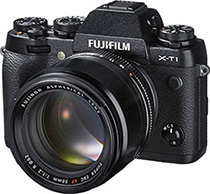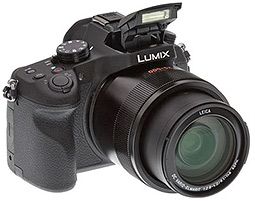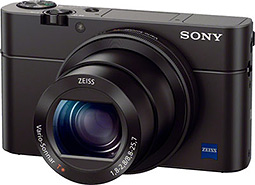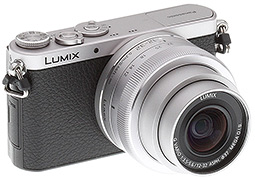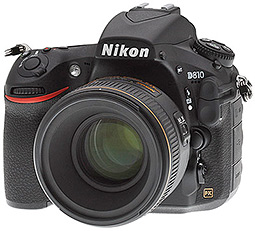Premium, Specialty, Niche: Welcome to the New World Order
posted Sunday, July 27, 2014 at 8:26 PM EDT
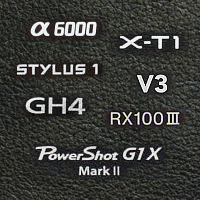
The torch has been passed, and the balance shifted. Mirrorless cameras and models filling the specialty "niche" roles are now clearly in the ascendance over more traditional models, at least in the product-flow here at IR.
The transition has been coming about for several years now, but 2014 seems to be signalling a shift from traditional models, ushering in the new frontier for the enthusiast camera market. And that frontier is all about larger sensors in ever-smaller bodies, and all-in-one cameras that can "do it all".
There was a day not so long ago when the predominant areas of popularity for IR readers were in three basic categories: DSLRs (of varying market levels), premium compacts (that still had small sensors, typically 1/1.7" types) and the specialty zoom market (compact zooms and super zooms, usually with the smaller 1/2.3" type sensors). It was once believed that the emergence of smartphones would cut deeply into the market for new digital cameras, and that's been somewhat true, but mostly on non-premium (cheap) compact lines. The three areas mentioned above continue to be alive and well here in 2014, and have thus far held their own against the smartphone usurpers.
There have been some significant shifts at the other end of the market, though, and the reason for this article is that this process seems to have accelerated in 2014. The three strongest trends on our site are in the areas of popular mirrorless ILCs like the Sony A6000, Olympus E-M10 and Fujifilm X-T1; premium compacts with much larger than traditional sensors like the Sony RX100 III and Canon G1X II; and premium bridge models with larger sensors than the once common 1/2.3" sensors. There's also the niche specialty of cameras loaded with premium video capabilities and 4K resolution like the Panasonic GH4.
And then, there were three. One of the most interesting aspects of 2013 was the emergence of the premium bridge camera market. The Sony RX10 with it's 1" sensor and nice zoom range ushered in this era, followed by the very popular Olympus Stylus 1, each of which sport constant apertures across their full zoom ranges. In fact, we added a new category to our Camera of the Year Awards just to accommodate these two groundbreaking models. Now, the Panasonic FZ1000 has joined them, entering at a low price point ($899), compared to where the RX10 launched (Sony quickly responded with a significant price cut to the RX10) and sporting a few features that go above and beyond the competition, like twice the zoom range and 4K video. And the reception to this newest model on our site? Let's just say it's pretty popular.
Smaller (and larger) is better. The other obvious trend we're seeing is towards smaller cameras packing larger than traditional sensors. The Canon G1X and Sony RX100 both launched in 2012, and the compact RX100 has now broadened into an extremely popular trilogy of models, culiminating in the RX100 III, announced earlier this year. The new Canon G1X Mk II has also been extremely popular with our readers, a hearty all-in-one larger compact with a sensor almost as big as those found in sub-frame DSLRs.
The Panasonic GM1 pushed the envelope for how small a Micro Four Thirds ILC could be and has received a great deal of attention from our readers as well as IR staff (our founder can often be seen with our review sample in hand) and now Samsung has pulled a similar coup in the form of the Samsung NX Mini, an ILC with a 1" sensor, touted as the smallest ILC on the planet. The Olympus Stylus 1 (mentioned in the premium bridge category) also adds weight to this section (or, less weight, to be exact) as a premium bridge model that's closer in size to a pocket camera, and has consistently remained among the top ten most popular cameras on our site so far this year. Just recently, the new Nikon V3 seems to have struck a real chord with enthusiast users. It's certainly been getting a lot of attention from our readers, at least, and our writer who's reviewing it has gone so far as to say it's a camera he'd spend his own money on.
One other trend worth mentioning is the popularity of Sony's first three full frame mirrorless offerings, beginning with the A7 and A7R from the Fall of 2013 and continuing with the video and low-light powerhouse A7S, which debuted recently. Judging from reader interest here at IR, many of you are clearly intrigued by the possibility of a full frame ILC without the DSLR bulk. Also noteworthy is that the A7S can shoot (but not internally record) 4K video.
Diversity as a rule. Matching this trend of niche products growing in popularity is that overall model diversity is now virtually a given in the market. Taking a look at the top 9 cameras on our site as of this writing, in the top 5 alone there are 4 different manufacturers represented, 4 different sensor sizes and 4 completely different price brackets. That's diverse! And while 5 of the top 9 are ILC's, 4 are fixed lens models (two premium compacts and two premium bridge models) and there are 6 different manufacturers represented in all. Clearly, our readers are looking at a wealth of different options, styles, price points... you name it. (The list shows the top 9 vs 10, because double-digits didn't work in the layout. The #10 slot is currently occupied by the Olympus E-M10.)
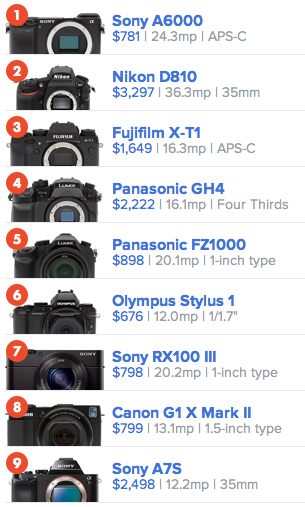
Not so fast, whipper-snapper! No, DSLRs aren't about to go away anytime soon; that's not the point we're trying to make here. There are plenty of IR faithfuls and other enthusiasts who will likely remain DSLR shooters and never make the switch to niche, and with good reason. Good DSLRs are proven, dependable, and get the job done (both the cameras and the IR faithfuls who shoot with them) and buyers know what they're getting without needing to worry too much about the potential issues that any new technological offering can bring. Just ask the humble Canon T3i if DSLRs are going away, and you'll get a very clear and reassuring answer.
The real point here is this: these are exciting times in the enthusiast camera industry, quite possibly the most exciting in the history of the digital era, and we wanted to make special mention of the overall trend towards these specialty models. This is both because you - our loyal readers - seem very excited about them, and also because we, your faithful IR review team, feel the same way.
What do you think personally, though? Have you made changes in your equipment mix lately? Have new models and niches taken the place of older ones for you, or are the new designs just adding to your arsenal? Have you bought something new, rather than upgrading an existing SLR? And here's a question of particular interest to us: How long have you had what you consider to be your main shooting camera?
We should really assemble these questions and more into a proper survey, but given the flood of interesting new models we're trying to catch up with, that's not likely to happen any time real soon - Meanwhile, though, let us know your thoughts in the comments section below.
Happy shooting in the New World.
- The IR Team



is the only given these days.

